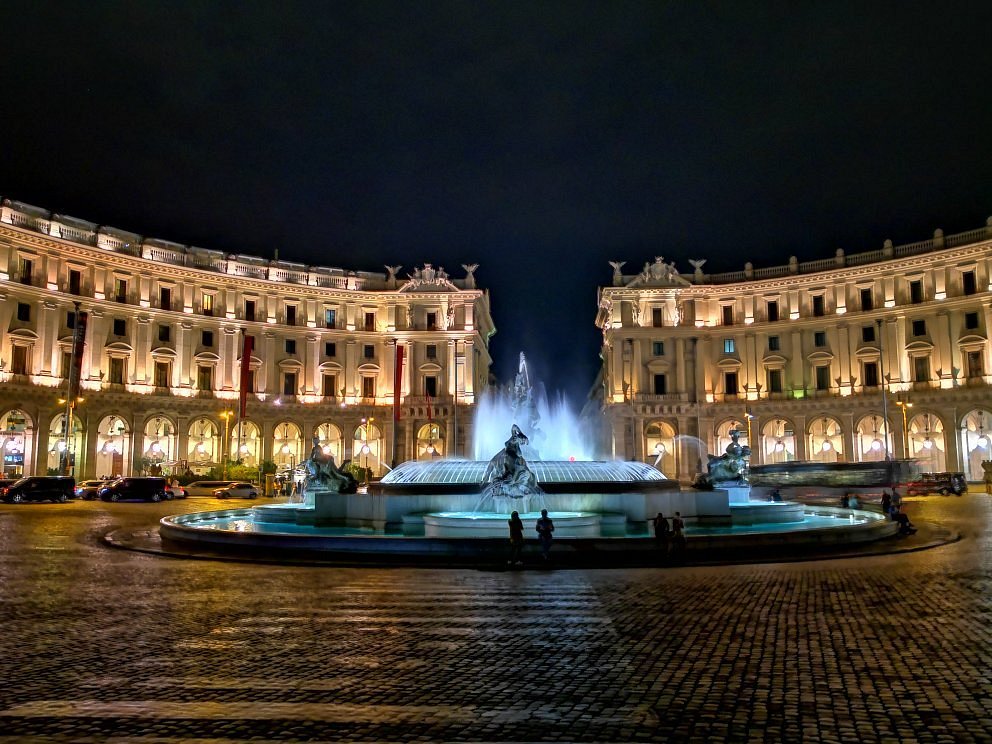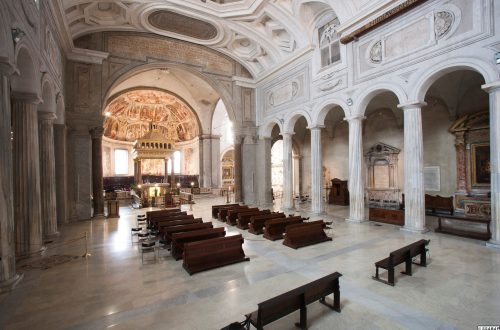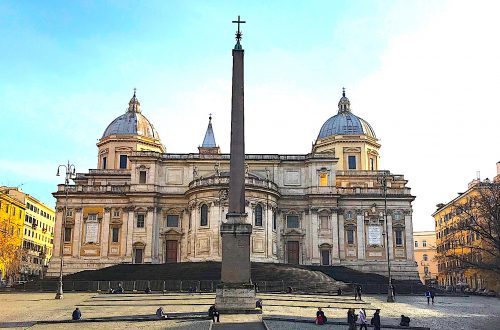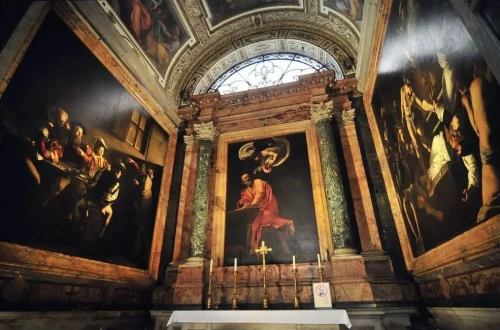
Piazza della Repubblica
One of the notable landmarks in Piazza della Repubblica is the Fountain of the Naiads, which features sculptures of nymphs and water deities. The fountain is surrounded by a circular pool and is a popular spot for both tourists and locals.
Fontana delle Naiadi (Fountain of the Naiads): This central fountain in the square was designed by Italian sculptor Mario Rutelli and completed in 1901. It features sculptures of Naiads, mythical water nymphs, representing the rivers and oceans. The central figure is a large bronze statue of Naiad, and around her are smaller sculptures representing the Nymph of the Lakes, the Nymph of the Rivers, and the Nymph of the Oceans.
The square is also dominated by the Basilica of Santa Maria degli Angeli e dei Martiri, a church designed by Michelangelo inside the remains of the Baths of Diocletian. The basilica is known for its grand interior and unique architectural features.
Basilica of Santa Maria degli Angeli e dei Martiri: Originally designed by Michelangelo, this basilica is located on the northeastern side of the square. It was constructed within the remains of the ancient Baths of Diocletian, one of the largest public baths in ancient Rome. The basilica is dedicated to the Christian martyrs and features an impressive interior with a vast central hall.
Here are some more details about Piazza della Repubblica in Rome:
Obelisk of Esquiline: At the center of the square stands an ancient Egyptian obelisk, known as the Obelisk of Esquiline. It originally stood in the Temple of Isis and Serapis in Rome and was moved to its current location in the 16th century.
Surrounding Buildings: Piazza della Repubblica is surrounded by buildings that showcase a mix of architectural styles. Some of these buildings date back to the late 19th and early 20th centuries. The square underwent significant changes during the urban planning initiatives in the late 19th century, which aimed to create a more modern and unified appearance for the city.
Events and Activities: The square is a popular meeting point and often hosts events, markets, and cultural activities. It is also a hub for public transportation, with a metro station (Repubblica – Teatro dell’Opera) nearby, making it convenient for visitors to explore other parts of Rome.
Piazza della Repubblica has been an important hub in Rome for centuries, and it continues to be a lively area with shops, cafes, and restaurants. The square is often used for various events and gatherings, and its central location makes it easily accessible for visitors exploring the city.
Overall, Piazza della Repubblica is not only a historical and architectural landmark but also a vibrant and dynamic space within the city of Rome.
![]()


You May Also Like

San Pietro in Vincoli
25 February 2024
Basilica di Santa Maria Maggiore
24 January 2024